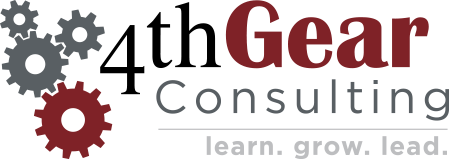I’ve worked with a lot of companies that focus on changing their processes to improve efficiency and improve execution. It’s amazing how much simplifying a process or removing a hurdle can help people do their jobs more effectively and improve profitability.
Unfortunately, many organizations also try to use process to change human behavior. That simply doesn’t work. If people aren’t already executing a process, improving it really won’t help unless the poor process was the only thing in the way in the first place. The bottom line on process improvement is this: if people aren’t already doing something, making it easier to do won’t dramatically change things. And mandating it may achieve compliance, but not quality or commitment.
Some of the most common examples that I see of creating a process with the goal of changing human behavior are performance management, coaching, communication, decision-making and even sales. If people aren’t executing against what’s already in place, or even creating their own ways to get these things done, then making them easier won’t help. It’s like improving a road that no one wants to drive on. It’s just a smooth empty road.
Let’s take performance management as an example since I think it may be the biggest offender. Just for the record, performance management is a misleading term even though it’s widely used in business. It’s simply not possible to manage the performance of another person. Inspire, lead, motivate, enable, improve yes, but not manage. Often, organizations will build or recreate the performance management process and the accompanying documents in an effort to improve the frequency and quality of conversations that are designed to improve performance.
What they usually get though are groups of managers that fill out all the extra paperwork, without improving performance in the organization at all. In fact, I’ve seen cases where organizational performance is actually hindered while everyone stops to have a mandated conversation and fill out all of the required paperwork.
The belief is that since we can now track performance conversations, we have increased the quantity and quality of them. In reality, while sometimes the quantity is increased, rarely is the quality better. I’ve even seen cases where managers coached less because they had to take time to have the “mandated” conversation that was predetermined by the documents, not the one that the employee really needed to achieve more of their potential.
Commitment drives behavior, not process, let’s look at a few examples from everyone’s world:
If you want to work out and stay fit, it’s easier now than it has ever been. There’s a gym on every corner, home fitness equipment is reasonable there are a million books and tapes and gadgets to help you work out efficiently. It’s not coincidence that the vast majority of the people that take advantage of all the added improvements are the ones who were working out even when it was difficult. Very few people are now getting off the couch to work out simply because a gym opened up a few miles closer to their house. The people who are exercising are doing it because they believe they should, not because someone made it easier or told them how much it should matter to them.
Let’s look at a reverse example. Paying taxes is probably one of the most cumbersome, challenging, complex processes ever created and yet most of the 300 million people in the country will find a way to get it done. It’s clearly in their best interest to do so, either because they want some of their money back or because they don’t’ want to pay penalties or go to jail. No matter how hard it gets, people will figure out how to get it done whether they do it themselves, or pay somebody else to do it for them. If no one was paying taxes today, would a smooth process encourage it?
Human behavior is changed when people make connections between the things they really want in life and the behaviors they need to shift in order to get them. A better process is not a motivating factor, it’s simply a way to make the path easier for the people that are already on it.
If you want to change the way coaching, communication, or performance improvement happens in your organization then focus on creating leaders who understand the value of those things and help others understand it as well. Help managers make the connection between their own success and their ability to lead, coach, and motivate a team. Then help everyone understand how to do it effectively and give them the time and the tools to master those things.
It’s nice to think that if you build it they will come when it comes to a great process. The reality is, if they aren’t already trying to get there, their desire for the destination might be the problem, not the road.
We develop better leaders so they can build a better future. Contact Us to learn about leader development via our training, workshops and executive coaching.


